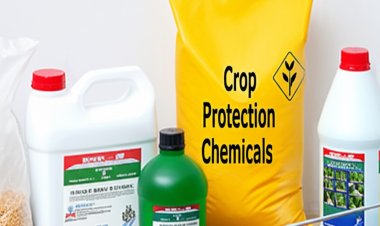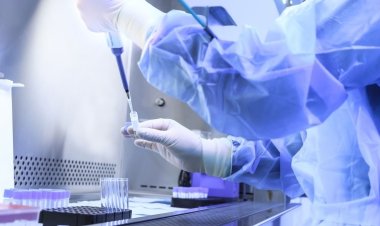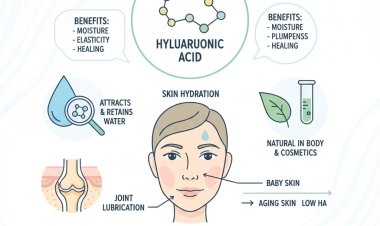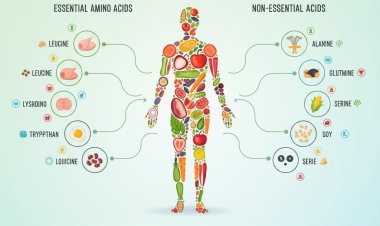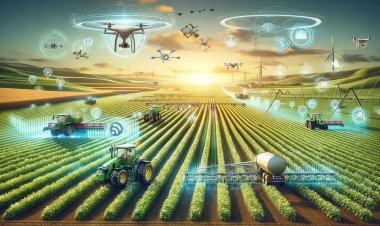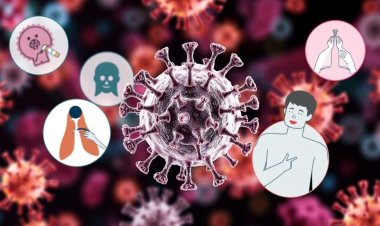Agricultural Biologicals Market: Growth, Trends & Key Insights (2025-2030)
Discover the Agricultural Biologicals Market, driven by the demand for eco-friendly farming solutions. Discover key trends, market growth, and the leading players in sustainable agriculture, as well as the role of biopesticides and biostimulants in this sector.
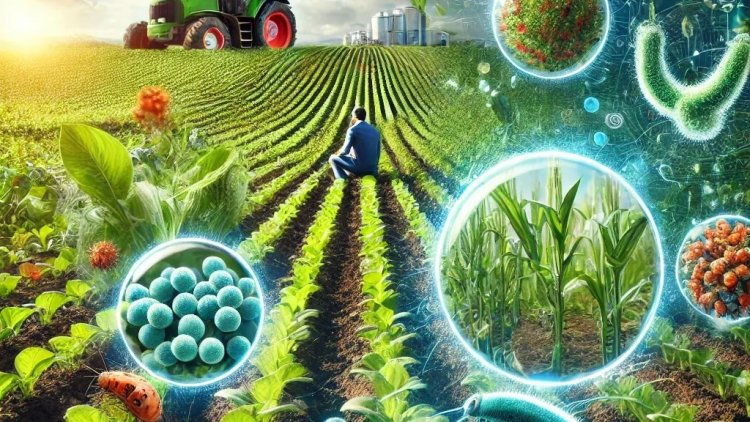
Agricultural Biologicals Market Size and Forecast
The global Agricultural Biologicals Market, valued at USD 12.3 billion in 2022, is projected to grow significantly, reaching USD 33.52 billion by 2030, expanding at a robust compound annual growth rate (CAGR) of 13.4% from 2023 to 2030. This rapid growth is driven by a combination of factors, including the increasing demand for organic food, the rising focus on sustainable agricultural practices, and a global shift toward reducing chemical inputs in farming. Agricultural biologicals encompass a broad range of products, such as biopesticides, biofertilizers, and biostimulants. These products are derived from naturally occurring microorganisms, plant extracts, beneficial insects, and other organic sources, enhancing soil fertility, promoting plant growth, and supporting ecosystem health. Unlike chemical pesticides and fertilizers, agricultural biologicals are environmentally friendly, leaving no harmful residues and reducing the health risks associated with conventional farming practices.
Years of over-reliance on chemical inputs have depleted beneficial microorganisms in the soil, leading to reduced soil fertility and compromised crop health. As a result, there has been a growing shift toward agricultural biologicals, which aim to restore the natural balance in agricultural ecosystems. This shift is further bolstered by increasing consumer awareness regarding the health benefits of organic food, which has contributed to the rise in demand for biopesticides and biofertilizers. Additionally, the push for sustainable farming practices, particularly in regions like Europe and North America, is driving the adoption of these biological solutions in conventional farming systems.
Agricultural biologicals are viewed as key components of sustainable farming, providing an eco-friendly alternative to traditional chemical-based farming. The benefits of agricultural biologicals include lower environmental impact, enhanced biodiversity, and better long-term soil health, aligning with global efforts to mitigate climate change and promote food security. As these products become more integrated into farming systems worldwide, their market share is expected to expand rapidly, with biopesticides, biofertilizers, and biostimulants playing crucial roles in meeting the growing demand for safe, effective, and sustainable crop production.
Download Sample Report PDF (Including Full TOC, Table & Figures) @ https://www.vantagemarketresearch.com/agricultural-biologicals-market-1049/request-sample

List of the Top Key Players in the Agricultural Biologicals Market:
- BASF SE (Germany)
- Syngenta (Switzerland)
- Marrone Bio Innovation (U.S.)
- Isagro SPA (Italy)
- UPL Ltd. (India)
- Evogene Ltd. (Israel)
- Bayer AG (Germany)
- Vegalab (Switzerland)
- Valent LLC (U.S.)
- Stockton Bio AG (Israel)
- Biolchim (Italy)
- Rizobacter Group (France)
- Valagro (Italy)
- Koppert Biological Systems (Netherlands)
- Lallemand (Canada)
- Symborg (Spain)
Agricultural Biologicals Market Key Insights (2023-2030)
The global agricultural biologicals market is diversified across various product types, sources, and modes of application, each of which plays a distinct role in enhancing agricultural productivity and sustainability. The three primary categories of agricultural biologicals include biopesticides, biofertilizers, and biostimulants. Each category has specific advantages, depending on the type of crop and the farmer's needs.
- Biopesticides/Biocontrols: Biopesticides are gaining traction as an effective alternative to chemical pesticides. They are derived from natural materials, including animals, plants, bacteria, and certain minerals. The biopesticide market is expected to dominate the agricultural biologicals space, driven by a combination of environmental concerns, regulatory changes, and consumer demand for chemical-free food. The rise in pest resistance to conventional pesticides and increasing awareness of the adverse health effects of chemicals have further fueled the adoption of biopesticides.
- Biofertilizers: Biofertilizers, which contain living microorganisms that enhance the availability of nutrients to plants, play a crucial role in improving soil health and crop yields. These products help replenish soil nutrients, improve soil structure, and reduce the need for synthetic fertilizers. The demand for biofertilizers is particularly strong in regions where soil health is a major concern, such as parts of Asia-Pacific and Africa.
- Biostimulants: Biostimulants are products that promote plant growth by enhancing nutrient uptake, stress tolerance, and overall plant vigor. They are gaining popularity for their ability to enhance crop resilience and productivity, particularly in the face of climate change-induced challenges such as drought and extreme weather conditions. The biostimulant market is expected to experience strong growth due to its versatile application and relatively lower environmental footprint compared to synthetic growth regulators.
The market for agricultural biologicals is segmented not only by product type but also by the source of the product. Microbial sources, including bacteria, fungi, and viruses, are expected to dominate the market due to their effectiveness and lower cost. Plant extracts are also emerging as a significant source, driven by their natural origin and broad consumer acceptance. Other sources, such as beneficial insects and macrobials, are growing but currently occupy a smaller share of the market.
Application methods are diverse, with foliar sprays, soil treatments, and seed treatments being the most common. Among these, foliar sprays are expected to capture the largest market share as they are easy to apply and effective across a wide range of crops. Seed treatments, while a growing segment, are primarily used for specific crops and offer targeted pest and disease management.
Take Action Now: Secure Your Position in the Global Agricultural Biologicals Industry Today – Purchase Now.
Agricultural Biologics: Sustainable Farming Driving the Market Growth
Agricultural biologics are a group of crop protection products designed to improve agricultural practices by minimizing environmental harm and promoting sustainable farming. These products, including biopesticides, biofertilizers, and biostimulants, provide a natural alternative to traditional chemical farming, emphasizing soil health, plant growth, and pest control. By utilizing naturally occurring microorganisms, plant extracts, and beneficial insects, agricultural biologicals help restore the balance of ecosystems in agriculture, thereby reducing reliance on harmful chemicals.
The growing global demand for organic food, environmental sustainability, and the health of both consumers and farmers has fueled the development of agricultural biologicals. As concerns over chemical residues in food and their potential health effects increase, agricultural biologicals offer a safer and more sustainable alternative. The demand for organic food products, which are produced without synthetic pesticides and fertilizers, is driving the adoption of agricultural biologicals, especially biopesticides and biofertilizers. Furthermore, governments and regulatory bodies are increasingly supporting the use of these biologics through policies that incentivize sustainable agricultural practices.
In 2020, the European Union (EU) set a significant precedent by implementing the "Farm to Fork" strategy, which aims to reduce chemical pesticide use by 50% by 2030. This strategy has provided strong regulatory support for the growth of agricultural biologicals in Europe, creating a favorable environment for market expansion. Similarly, Japan’s Green Food System Strategy, launched in 2021, encourages the use of biostimulants and biopesticides, further driving market demand. The adoption of these products aligns with global trends toward reducing carbon footprints, enhancing biodiversity, and ensuring the long-term sustainability of agricultural systems.
As the market continues to evolve, the agricultural biologicals industry faces challenges such as inconsistent product performance, regulatory hurdles, and limited awareness among traditional farmers. However, ongoing research and development efforts are expected to overcome these challenges, leading to more effective, reliable, and affordable biological products. The increasing focus on sustainable farming practices, combined with technological advancements in biological product development, suggests that the agricultural biologicals market will continue to experience robust growth in the years to come.
Competitive Landscape of Agricultural Biologicals Manufacturing Companies
The agricultural biologicals market is highly fragmented, with over 200 companies worldwide offering a range of products in biopesticides, biofertilizers, and biostimulants. The industry encompasses companies of all sizes, ranging from small startups to large multinational corporations, all striving to innovate and expand their portfolios of biologic crop solutions. Key players in the market include Syngenta, BASF SE, Bayer AG, UPL Ltd., and Marrone Bio Innovations, among others.
The market is geographically diverse, with a significant concentration of companies in the Asia-Pacific, particularly in India and China, which are major hubs for the production of agricultural biologicals. Europe and North America are also strong markets for these products, driven by regulatory support, increasing demand for organic food, and the push for more sustainable agricultural practices.
One of the key trends in the competitive landscape is the increasing number of partnerships and collaborations between agricultural biological companies. These collaborations, particularly in product development and distribution, are enabling companies to expand their market reach and enhance their product portfolios. For instance, Syngenta’s partnership with Unium Bioscience in 2023 to distribute biostimulants across Northwest Europe and Bayer’s collaboration with Kimitec in 2023 to develop biopesticides and biostimulants showcase the industry's trend toward strategic alliances.
Moreover, leading companies are increasingly investing in R&D and intellectual property, as evidenced by the large number of patent filings in the agricultural biologicals sector. These innovations are critical to staying ahead in a market that is becoming increasingly competitive.
Segmentation of the Global Agricultural Biologicals Market
By Product
- Biopesticides
- Bio Stimulants
- Biofertilizers
- Other Products
By Application Method
- Foliar Spray
- Seed Treatment
- Soil Treatment
- Post-harvest
By Crop Type
- Cereals & Grains
- Oilseeds & Pulses
- Fruits & Vegetables
- Other Crop Types
By Region
- North America
- Europe
- Asia Pacific
- Latin America
- Middle East & Africa
For the Agricultural Biologicals Market Research Report and updates, view the full report now!
Conclusion
The agricultural biologicals market is poised for substantial growth over the next decade, driven by the increasing demand for organic food, sustainable farming practices, and environmentally friendly crop protection solutions. With ongoing innovations, strategic collaborations, and strong regulatory support, the market is expected to continue its upward trajectory, offering significant opportunities for both new entrants and established players in the industry. As the agricultural sector adapts to the challenges posed by climate change and environmental degradation, agricultural biologicals will play an essential role in shaping the future of farming and food production.
FAQ.
- What are Agricultural Biologicals?
- Agricultural biologicals are natural or biologically derived products used in agriculture to enhance crop growth, protect plants from pests and diseases, and improve soil health. They include biopesticides, biostimulants, biofertilizers, and other microbial-based products.
- What are the key drivers of the Agricultural Biologicals Market?
- The key drivers include the growing demand for organic farming, increasing consumer awareness of sustainable farming practices, environmental concerns, the need for eco-friendly solutions to replace synthetic chemicals, and the rise of integrated pest management systems.
- How are Agricultural Biologicals different from conventional pesticides?
- Agricultural biologicals are derived from natural sources, such as microorganisms, fungi, and plants, whereas conventional pesticides are chemically synthesized. Biologicals tend to be more environmentally friendly and have fewer residual effects.
- What are biopesticides, and how do they work?
- Biopesticides are natural pesticides made from microorganisms, bacteria, or plant extracts. They work by controlling pests through various mechanisms, such as disrupting the pest's life cycle or enhancing the plant's resistance to diseases.
- What is the market outlook for agricultural biologicals over the next 5-10 years?
- The market is expected to grow significantly, driven by rising demand for sustainable agriculture, regulatory support for organic farming, and the increasing adoption of biologically based solutions over chemical alternatives.
- Are Agricultural Biologicals effective in controlling plant diseases?
- Yes, agricultural biologicals, especially biocontrol agents, are highly effective in controlling a wide range of plant diseases by promoting natural defense mechanisms in plants or directly combating harmful pathogens.
- Which regions are leading the Agricultural Biologicals Market?
- North America and Europe currently lead the market, driven by advanced agricultural practices, government regulations that promote sustainability, and high demand for organic products. The Asia-Pacific region is also experiencing rapid growth due to increasing agricultural activities and investments in sustainable farming practices.
- What challenges does the Agricultural Biologicals Market face?
- Challenges include the higher cost of some biological products compared to their chemical alternatives, the need for increased research and development, limited awareness in certain regions, and the lengthy regulatory approval process for new products.
- What is the role of biostimulants in agriculture?
- Biostimulants enhance plant growth, improve stress tolerance, and boost nutrient absorption. They do not directly control pests or diseases but improve plant health and yield by strengthening the plant's natural resilience.
- How are Agricultural Biologicals regulated?
-
- Agricultural biologicals are regulated by government agencies, such as the U.S. Environmental Protection Agency (EPA) and similar bodies in other regions. These regulations ensure that the products are safe, effective, and environmentally friendly before they are approved for commercial use.











